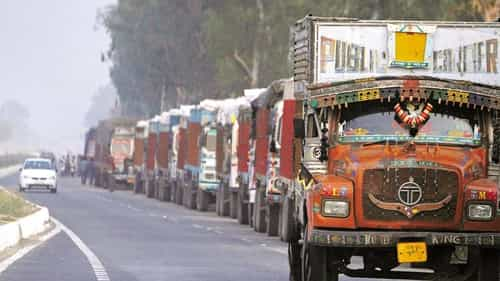Quick Facts
- Established: The e-way bill was launched on 1st February 2018, to facilitate greater transparency and a hassle-free movement of goods between the seller (consignor) and the buyer (consignee) both within and across the states.
- Before e-way bill, data from the Ministry of Road Transport and Highways shows that a normally a truck in India spends 20% of its time in inter-state checkpoints. This varies from 20-30 minutes in some states such as Rajasthan and Maharashtra but goes up to two hours in Bihar or Jharkhand. With e-way bill introduction,
- Karnataka was the first state to roll out the e-way bill system on 1st April 2018.
- E-way bill operations are compulsory for intra-state movement of goods for all states with effect June 2018

Now, let's understand - What is E-Way Bill?
The E-way bill, short form for an electronic-way bill is a permit in electronic form or electronically generated document. E-way bill required for inter-state & intra-state movement of goods across the country.
- It is required to be generated for the movement of goods of value more than Rs. 50,000 from one place to another place with detailed information of goods being transported.
- Once the e-way bill is generated, the recipient of goods can confirm or deny the receipt of goods before the actual delivery or 72 hours, whichever is earlier.

Note:
- Rule 138 of CGST Rules defines the provisions of the e-way bill.
- Section 68 of the CGST Act 2017 defines the compliances in case of movement of goods under the GST regime.
Why is it important?

- The e-way bill is a key anti-tax evasion measure and is a crucial part of the GST architecture.
- E-way bill is a mechanism to ensure that goods being transported comply with the GST Law and is an effective tool to track the movement of goods and check tax evasion.
- E-way bill was the idea of GST Council. E-way bill is necessary to be generated before the shipment starts its journey. This will establish a direct correlation between what is declared and what is actually moved.
When E-way bill not required?
- Distance less than 10 km - Where the goods are transported from place of business to place of the transporter for further transportation and such distance is less than 10 km then details of such conveyance (Business place to Transporter) is not required to be furnished.
- Where the goods are being transported by a non-motorised conveyance.
- Where the goods are being transported from the port, airport, air cargo, complex and land customs station to an inland container depot or a container freight station for clearance by Customs.
Goods that are out of the e-way bill’s ambit

- Some goods that are out of the e-way bill’s ambit include perishable items such as meat, milk and milk products and fruits and vegetables.
- Other items that don’t need an e-way bill are gold and silver jewellery, cooking gas cylinders, raw silk, wool and handlooms.
E-way bill document
When e-Way Bill is generated, a unique e-Way Bill Number (EBN) is made available to the supplier, recipient and the transporter.
- E-Way Bill is a twelve digit (12) number.
- The e-Way Bill replaces the Way Bill, which was a physical document and existed during the VAT regime for the movement of goods.
Mode of Generating E-Way Bill
E Way Bill can be generated by either of two methods:
- On the Web &
- Via SMS.
(a) The facility of generation, cancellation, updating and assignment of the e-way bill shall be made available through SMS to the supplier, recipient and the transporter, as the case may be.
(b) For each invoice, one EWB has to be generated, irrespective of same or different consignors or consignees are involved.
Validity of E-Way bill
The e-way bill’s validity varies depending on the distance that the goods have to travel.
Type of conveyance | Distance | Validity of EWB |
Other than over dimensional cargo |
Less than 100 kms
| 1 Day |
For every additional 100 kms or part thereof
| Additional 1 Day | |
For over dimensional cargo | Less than 20 kms | 1 Day
|
For every additional 20 kms or part thereof | Additional 1 Day |





Comments
write a comment